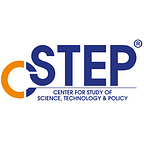Taxing Cab Aggregators for Sustainable Mobility
By Anantha Lakshmi Paladugula and Spurthi Ravuri.
Cab aggregators have revolutionised commuting in cities by offering technology-based seamless connectivity. Along the way, they are also changing the way our cities function and grow. While these services were proposed to improve mobility, global case studies reveal that they significantly increase congestion and impact public transit ridership. However, by providing effective policy direction, city administrators can steer this revolution towards a more sustainable mobility system.
Many cities have adopted smart taxation policies to leverage this emerging service: services are subsidised strategically to encourage shared rides in transit-poor areas, and taxed to discourage an impact on public transport and urban sustainability.
At present, taxi owners pay a motor-vehicle tax to state governments, irrespective of their enrolment with cab aggregators. This tax varies from INR 605 p.a. in Delhi to INR 1,600 p.a. in Karnataka, for a four-passenger permit vehicle. Cab aggregators also pay 5% Goods and Services Tax (GST), which is collected from passengers. However, the collected tax is directed to the national treasury and not specifically earmarked to strengthen the transport system. To raise revenue to fill the resulting funding gap for mobility projects, the Government of India set up the Urban Transport Fund (UTF) at the state and city level in 2006. Currently, the UTF is funded by budgetary allocations, public transit profits, created assets, etc. Taxes from cab aggregators can be used by UTF to fund initiatives that contribute to a sustainable urban mobility system that ensures equity in public services.
The governments currently enforcing such taxes levy either per trip or per kilometre-driven, flat or flexible taxes that vary over time and area served. Several cities have enforced a flat tax, such as Chicago (15 cents per trip), Massachusetts (20 cents per trip), Rio de Janeiro (1% of trip fare), Mexico City (1.5% trip fare), and Washington (6% of trip fare). This funding is used to support public transit agencies and finance projects in urban mobility. On the other hand, in Sao Paulo, the tax is charged per mile. This charge is flexible — higher for single occupant or peak hour trips; lower for trips with high occupancy rates, in transit-poor areas, using an electric vehicle, accessible vehicle, woman-driven or those that provide accessibility to bus and rail routes instead of competing with them.
India needs to adopt taxation policies that can guide cab aggregators towards integrating their services with the public transit system. These measures can encourage shared travel by subsidising high-occupancy trips (such as OlaShare and UberPool) against single-occupancy trips. Subsidies incentivising cab services to operate in transit deserts can improve connectivity. Similarly, tax exemptions can be given to encourage cabs providing first- and last-mile connectivity, while individual trips parallel to public transit corridors could be deterred with higher taxes. Similarly, drivers/operators deadheading or travelling empty while looking for trips could be taxed for those kilometres driven over a predefined limit. Using a carefully formulated tax system, governments can encourage trips that are sustainable, improve accessibility, and contribute to public equity. The funds, thus collected, can be used to finance major public transit projects that improve urban mobility, subsidise public-transit trips, integrate public transit services and make streets safer.
Such a strategy could prompt commuters to choose responsibly between transport modes, but there could be several challenges. Commuters, who would bear the initial impact of taxation, need to be convinced that the benefits from improved mobility will be comparable to the extra cost incurred. They need to be provided with better transit alternatives and improved infrastructure. Laterally, drivers’ income could also be affected through changes in demand. However, the policy needs to ensure that taxes are directed to commuters and not drivers. For the aggregators, this change in demand characteristics would translate to a better contribution to urban mobility as a whole.
For policymakers, the first step to formulating such a tax policy is a clear understanding of how and where to tax, to encourage better mobility, and how to spend the revenue to improve services. In this regard, data is a key prerequisite that can inform authorities on trip origins and destinations, hours of operation and duration of trips. Such information can aid in understanding the impact of these services on other modes of transport and audit for tax compliance. It can also reveal the possible ramifications of such policies.
The time is ripe to guide this growing industry to benefit the city. Smart tax policies can tailor the direction of this growth towards an ecosystem that prioritises moving people over moving vehicles.
Authors:
Anantha Lakshmi Paladugula (Senior Research Engineer) and Spurthi Ravuri (Research Associate) at the Center for Study of Science, Technology and Policy, one of India’s leading think tanks working in the area of climate, environment and sustainability; energy and power; artificial intelligence for development and new materials for strategic applications.
